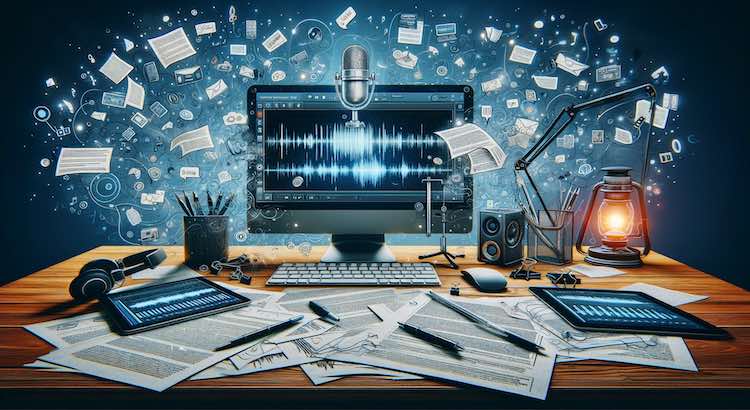Customizing Automated Transcription Settings for Interviews, Meetings, and Lectures
Automated transcription has become a vital tool for professionals in fields such as education, journalism, business, and healthcare. These services quickly turn spoken words into text, making information accessible and easy to search and share. However, not all audio content is the same. To get the best results, it is important to customize automated transcription settings based on the type of content—whether it's an interview, meeting, or lecture.
What Is Automated Transcription?
Automated transcription uses speech recognition technology to convert audio into written text. These systems use artificial intelligence and machine learning to improve over time. According to a 2022 study, automated transcription services have reached up to 90% accuracy in optimal conditions (Speechmatics, 2022).
Despite these advancements, issues such as background noise, various accents, technical jargon, and overlapping dialogue can make perfect accuracy difficult. Customizing your transcription settings helps address these challenges for better results.
Why Customization Matters
One-size-fits-all transcription settings often fail to handle specific needs of different content types. For example:
- Interviews may have multiple speakers.
- Meetings often include overlapping voices and action items.
- Lectures may use specialized terms and follow specific structures.
By adjusting settings, you can increase the accuracy and usefulness of your transcripts for each scenario.
Optimizing Settings for Interviews
Interviews often switch between two or more speakers. The conversation may involve unique terminology or names. To customize automated transcription for interviews, try the following tips:
- Turn on speaker identification to clearly show when each person is speaking.
- Add custom vocabulary such as names, brands, or technical terms related to the subject.
- Adjust filler word sensitivity to avoid capturing unnecessary pauses or “um” and “uh.”
Using these features, interviews become clearer and easier to read and analyze. Learn more about how transcription services can improve interview documentation.
Configuring Transcription for Meetings
Meetings can have many participants and include lots of background noise, especially during video calls or conference rooms. To make sure your meeting transcripts are accurate, consider these custom settings:
- Enable noise reduction to minimize distractions from the environment.
- Set up speaker labels so the transcript tracks who said what throughout the meeting.
- Highlight action items or summarize key points when the tool supports such features.
A study in 2023 showed that speaker identification improved clarity in 77% of meeting transcripts (Otter.ai, 2023). Explore more ways to streamline meeting documentation with automated transcription tools.
Personalizing Settings for Lectures
Lectures usually involve a single speaker talking about a focused topic, often using academic or technical language. Customize your transcript settings for lectures by:
- Uploading specialized word lists—add subject-specific terms and abbreviations to improve recognition.
- Slowing down transcription speed to match the pace of complex explanations.
- Enabling contextual analysis, if available, so the tool can recognize how the lecture is structured and identify main points versus examples and add-ons.
According to research, adding technical vocabulary to the transcription engine’s dictionary improved recognition accuracy by 16% in educational settings (EDUCAUSE, 2021).
How to Leverage Customization Tools
Most modern automated transcription platforms provide settings and tools for customization. To get the most out of your service, follow these steps:
- Review the user guide for your chosen tool and identify customization options.
- Experiment with different settings, such as speaker labeling, noise filtering, or vocabulary upload.
- Check a sample transcript to see if the settings fit your needs, and adjust as needed.
If you need regular, high-quality transcripts, consider looking into an AI transcription subscription for seamless customization and speed.
The Value of Human Review
Even the best AI tools benefit from human review. By combining automated transcription with professional proofreading, you can catch errors and ensure the final text is both accurate and easy to read. In a recent industry report, hybrid workflows resulted in 99% accuracy for complex audio (TranscribeMe, 2022).
You can also order transcription proofreading services for the most demanding situations.
Other Helpful Services
Depending on your needs, you might also want to:
- Add captions with closed caption services for videos or online lectures.
- Use subtitling services to reach international audiences.
- Access text translation or audio translation services for multilingual content.
Pricing and How to Get Started
Transcription costs vary based on speed and accuracy. Check the latest transcription pricing or captioning services pricing before you order transcription or order captions for your specific audio.
Conclusion
Customizing automated transcription settings boosts both accuracy and value, transforming generic transcripts into powerful tools for interviews, meetings, and lectures. By choosing the right features and reviewing your output, you get the most from your audio content every time.
GoTranscript offers a full range of solutions, including automated transcription, expert proofreading, and customized workflows. Explore their services to ensure your transcripts fit every unique scenario.



















 Verified Order
Verified Order